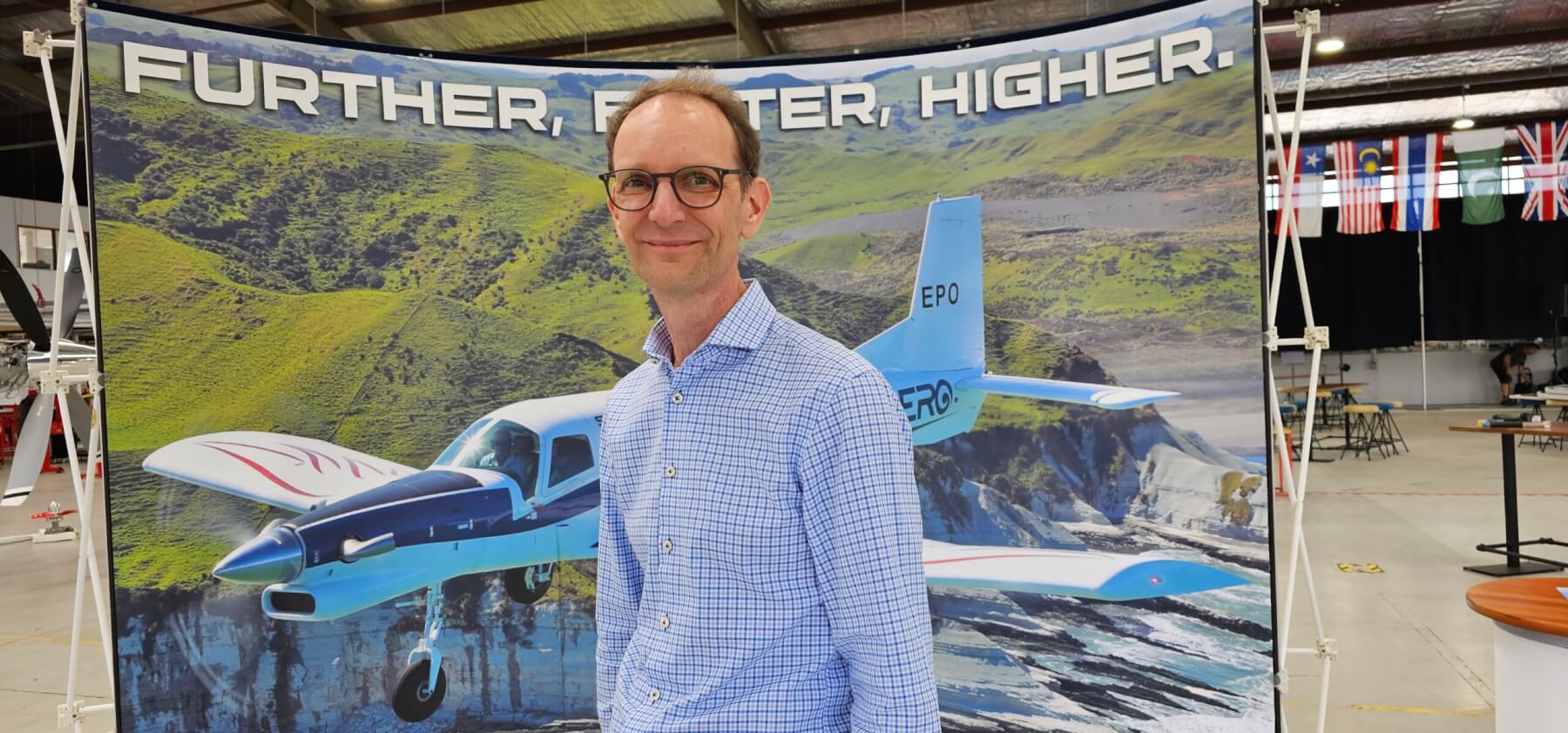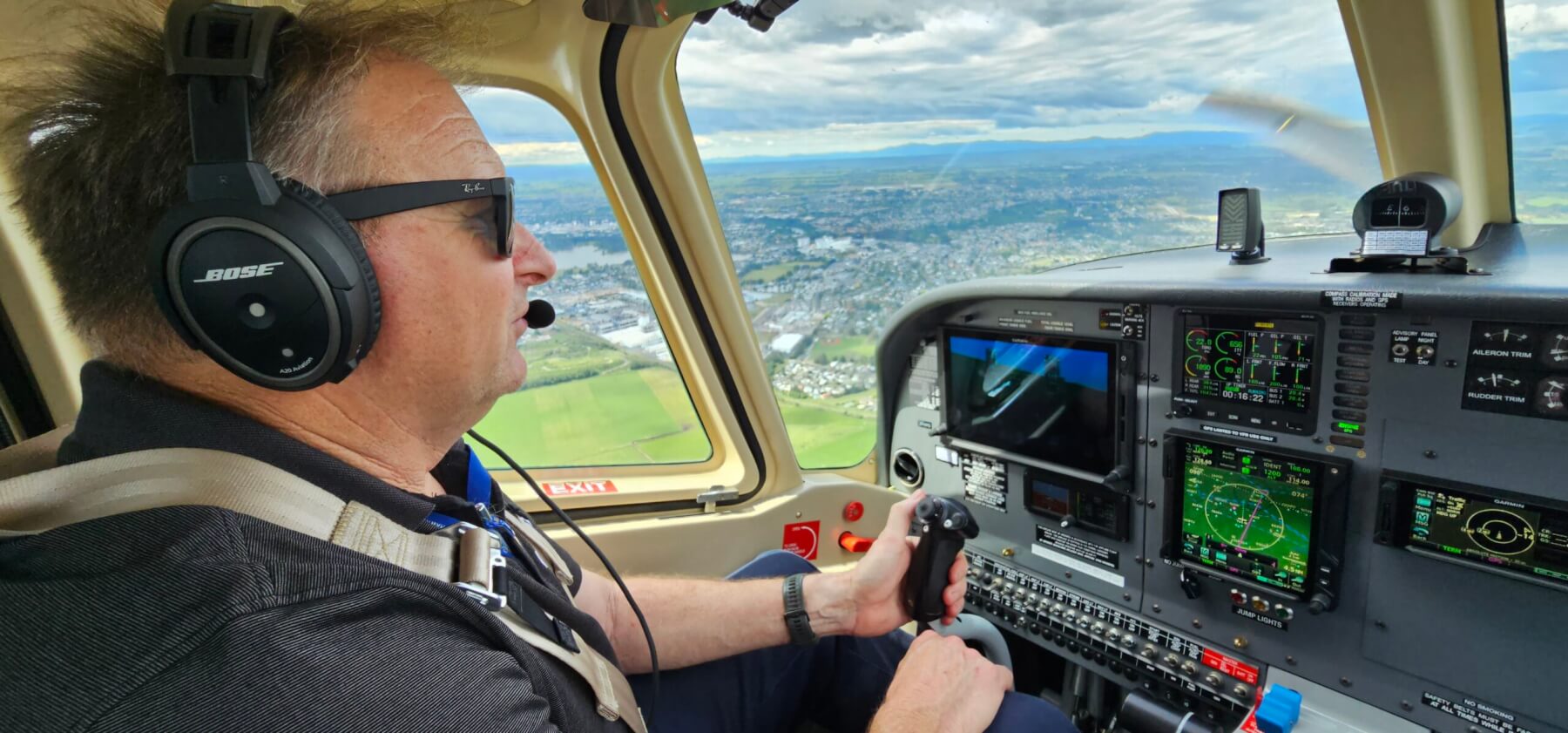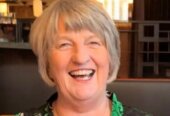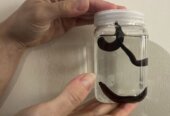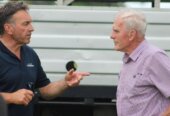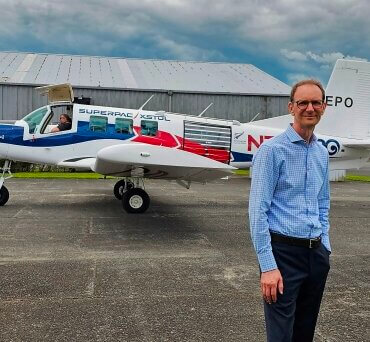
NZ Aero launches Superpac plane
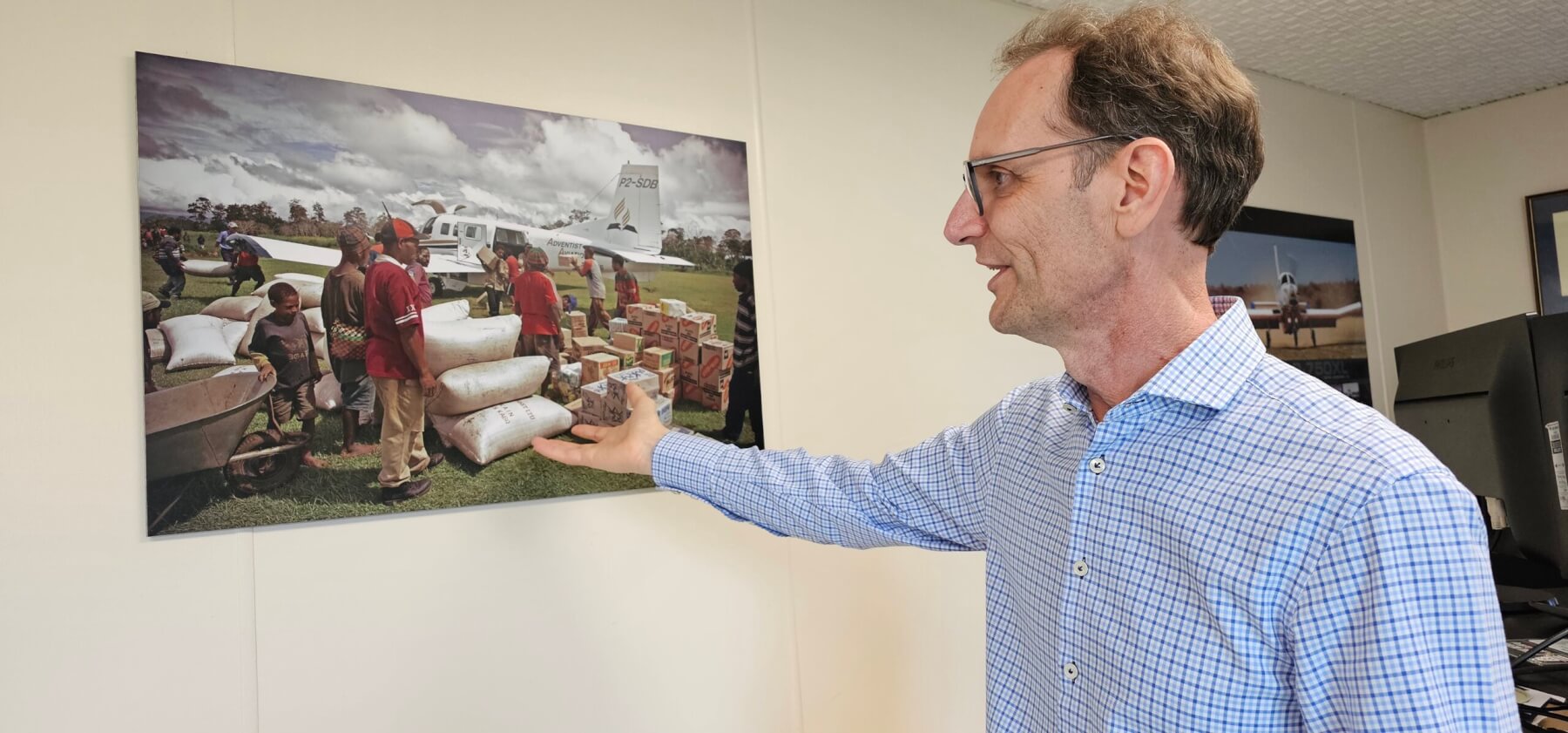
Stephen Burrows points to a photo on his wall of the PAC 750XL, the pre-runner to the new plane, taking in supplies to a Papua New Guinea village. Photo: Mary Anne Gill.
It took NZ Aero’s chief executive Stephen Burrows several years to fulfil his childhood passion of having a career in aviation.
Back in the 1980s he would look up when planes flew over his family’s Paterangi home and beg his father Colin to take him to New Zealand Aerospace Industries factory in Airport Road where he worked.
The first thing he did when he left Te Awamutu College at the end of 1988 was to try and get a job in aviation.
“I had a passion for aeroplanes but there were no jobs on offer.”
So instead, he became an apprentice motorcycle mechanic with Graham Wilks at Wilksbrooke Motors in Te Awamutu.
“I can still fix a motor bike and I still get chiranged (talked into) fixing motorbikes and I enjoy them,” Burrows tells The News on the day his company launches a new aircraft which has the potential to revolutionise the global aviation industry.
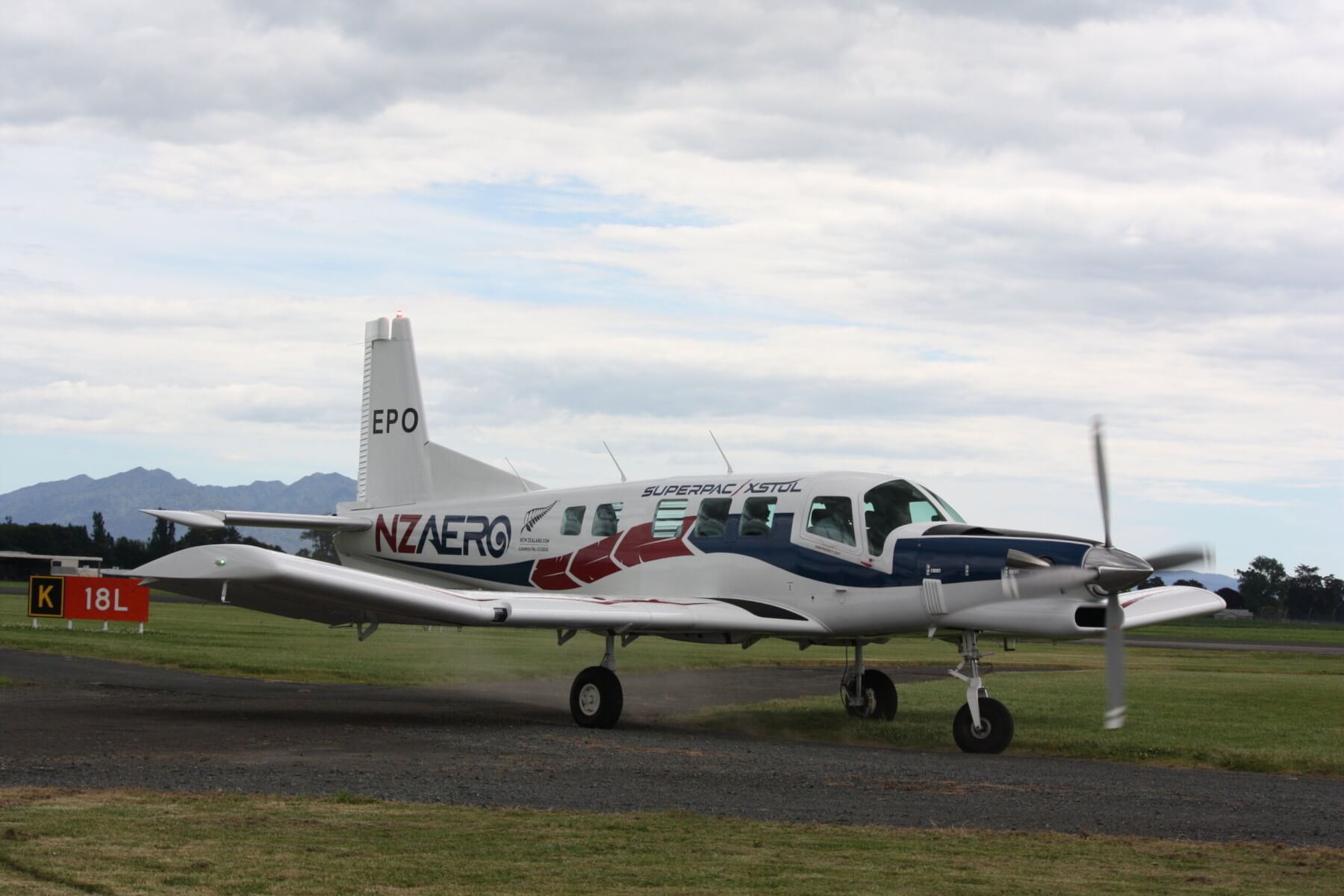
NZ Aero’s new super plane which does not require a sealed runway and is capable of taking off in as little as 200m and landing on a wide variety of rugged terrains, including hillsides.
The $5 million SuperPac Xstol (Extremely Short Take-Off and Landing) aircraft – which cost more than $10 million and seven years to develop – does not require a sealed runway and can take off in as little as 200m and landing on a wide variety of rugged terrains, including hillsides.
And it’s come from a workforce of 60 – expected to grow another 20 next year – largely drawn from the Waipā district in a factory where Burrows’ father once worked.
The irony is not lost on Burrows – who now lives down the road in Tamahere – who rattles off where the plane’s Kiwi-designed and built ingenuity will pay dividends.
In his office he points to a picture on the wall of the 750XL, the pre-runner to the new plane, making a difference in Papua New Guinea bringing in supplies to remote villages and helping with humanitarian aid.
NZ Aero is the country’s only commercial aircraft maker and they are doing it in an area steeped in aviation history.
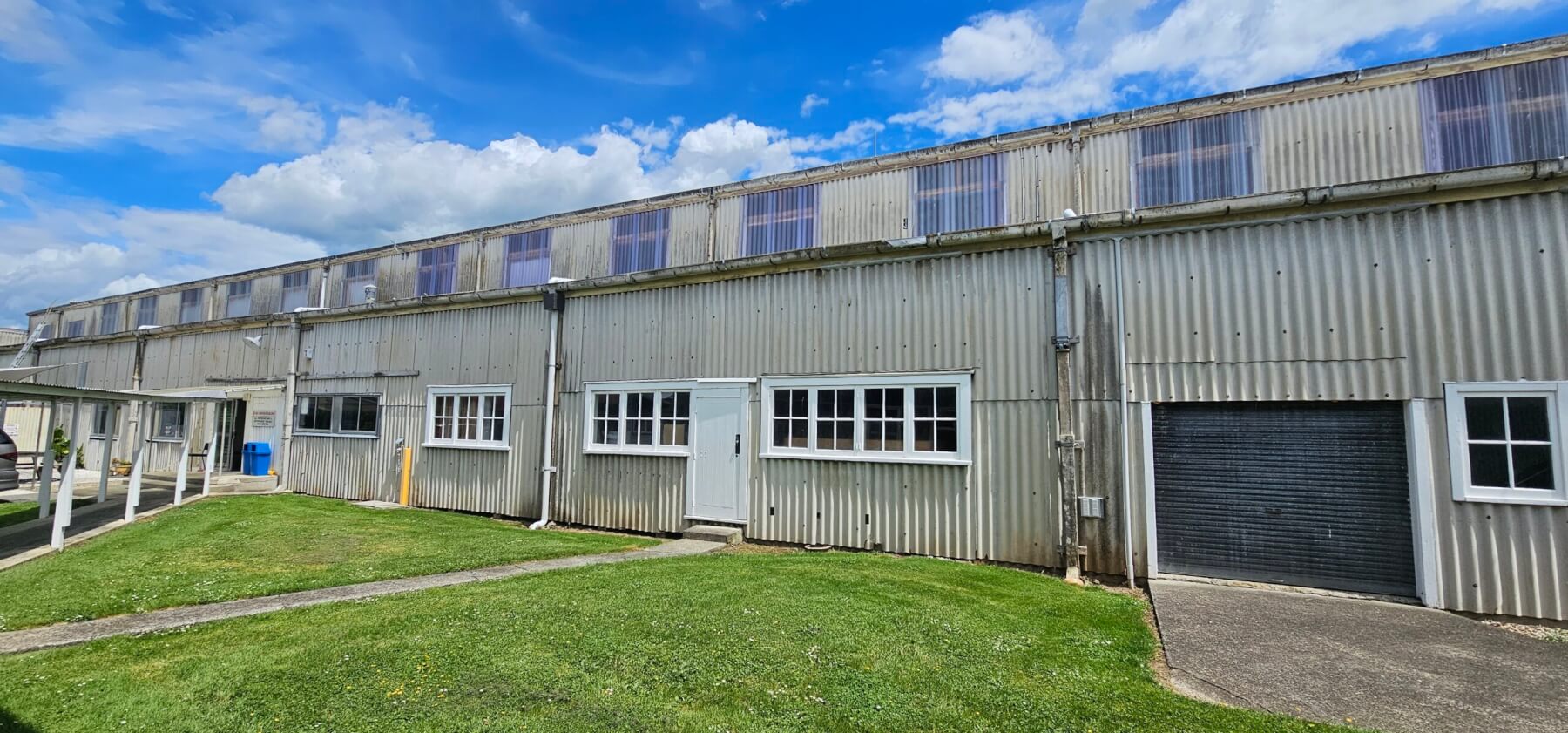
The workshop constructed during World War II from an American military kit set and used to service planes during the Pacific conflict, still stands and is used today.
Outside Burrows’ office window is the kit set factory the Americans assembled and brought their planes to for maintenance during World War II’s Pacific campaign. It was built in weeks and 80 years later is still standing and in use.
The legendary Oswald “Ossie” James revolutionised the agricultural industry with his topdressing planes, mostly FU24 Fletchers, assembled at Rukuhia. Aero Engine Services supplied engine and component facilities for James Aviation, on NZ Aero’s site in the 1950s. It went on to become New Zealand Aerospace Industries, where Burrows’ father worked, and then Pacific Aerospace Corporation in 1982.
It was in 1996 at Pacific Aerospace where Burrows finally got a job as an aircraft assembler and then in plane maintenance.
Wanting to learn more about engineering, Burrows enrolled in a certificate course at Waikato University, only for it to close after a week.
He stayed at university for a few months, but the pull of aviation drew him back and he went on to become quality assurance manager at Pacific Aerospace.
While the company successfully developed and built planes – like Crescos and the PAC 750XL – it had its down times.
Two years ago, Covid was cited as one of the major reasons for the company going into liquidation.
Burrows, then Quality general manager, stayed on because he was responsible for oversight of aircraft certificates.
“It kind of left me as the last man standing.”
The Civil Aviation Authority took over managing and maintaining the certificates for the hundreds of planes Pacific Aerospace had flying all around the world. Without the certificates, they would have been grounded.
Aviation attracts entrepreneurs, adventurers, people prepared to take risks. And that is what new owners and directors Donella Bond and Neil Young were. They purchased the assets of the company, renamed it NZSkydive Ltd – trading as NZ Aero – and continued manufacturing the 750XLs, CT4 Airtrainers, E-350 Expeditions and Crescos.
Their big goal was to complete the SuperPac Xstol and get it onto the market.
They asked Burrows to become Engineering general manager and then chief executive.
“I’m passionate about engineering, manufacturing and aircraft, so it’s perfect for me.
“Anything’s possible – from motorcycle groomer to CEO of New Zealand’s only aircraft manufacturing company. It seems like a made up story, but it’s not.”
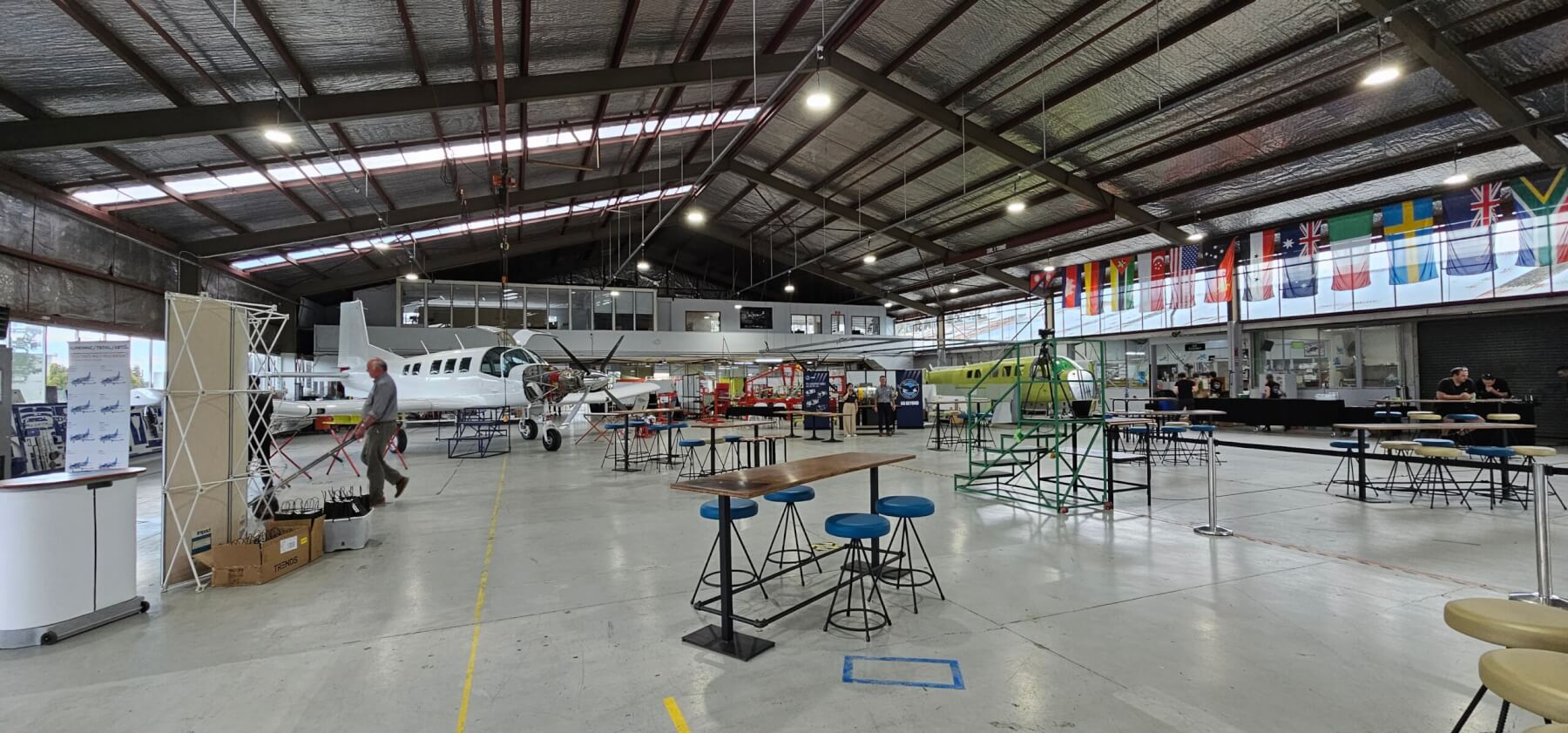
Inside NZ Aero’s workshop – the country’s only commercial aircraft maker – where new planes are under construction to help mitigate the impact of climate change, among other capabilities.
Burrows can do every job at the company, except fly planes.
“I’ve tried flying, I’m not very good at it.
“But it’s important as a CEO that you understand the processes of how things are made and the complexities and the issues the staff find when they’re trying to assemble an aircraft or make something.”
What does Burrows think Ossie James would make of the new plane with its new propulsion system, electronic flight deck, touch screens, hydraulic control, air conditioning, plush seats and even a USB charger nothing like the ramshackle Fletchers he and other topdressing pilots flew?
“I think he would be well impressed. He was a pioneer, he developed aircraft like we have. This is transformative, he would have liked that.
“You can get up to 20,000 feet in this aircraft and be back on the ground in under three.
“That for an operator is revenue.”
Part of the new plane’s future will lie in countries where climate change has resulted in larger fires across huge tracts of land.
The SuperPac’s flexibility means it can “land on a dime”, pick up water quickly (using a New Zealand-designed water carrier), provide medivac services and carry just about anything on board.
“We want to make products that serve a purpose,” said Burrows.
He is also enthusiastic about providing job opportunities for Waikato youngsters.
Te Kuiti High School and Sacred Heart Girls’ College have had students tour the factory.
“I’d love to have Te Awamutu College come,” said Burrows who is offering apprenticeships and internships.
“We’re keen to stimulate more interest, particularly among girls. It’s an industry which offers trades and the whole gambit of different skills. In order to attract those people, you’ve got to get them young.
“That was me, I had a passion when I was a young fellow, that aviation was going to be my career.”
The interview ends and Burrows does something he has done thousands of times since he was a boy. He looks to the sky and smiles this time at a plane he knows all too well – the SuperPac Xstol as it descends towards the Hamilton Airport runway.
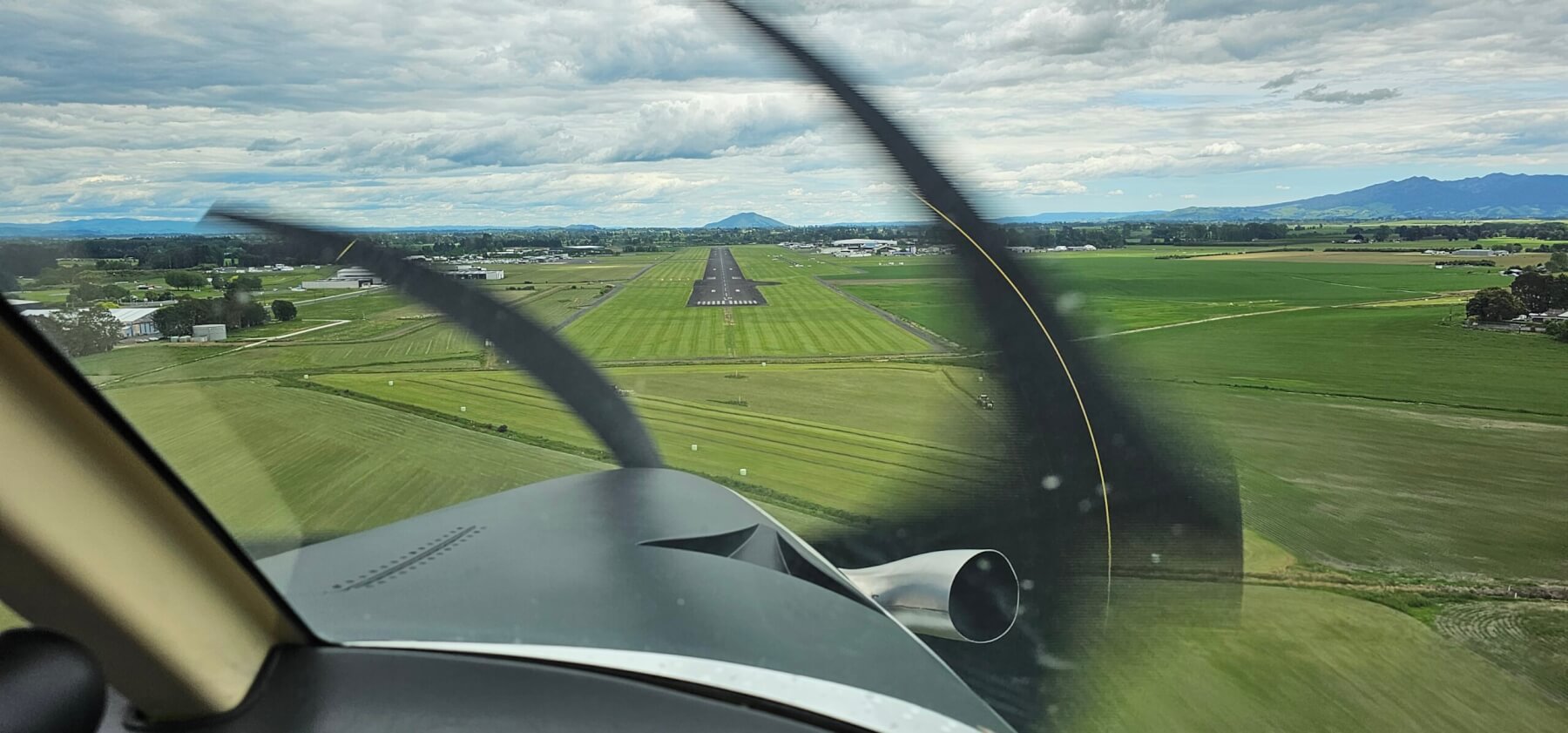
The SuperPac XSTOL plane descends towards the Hamilton Airport Runway with NZ Aero’s headquarters to the left.
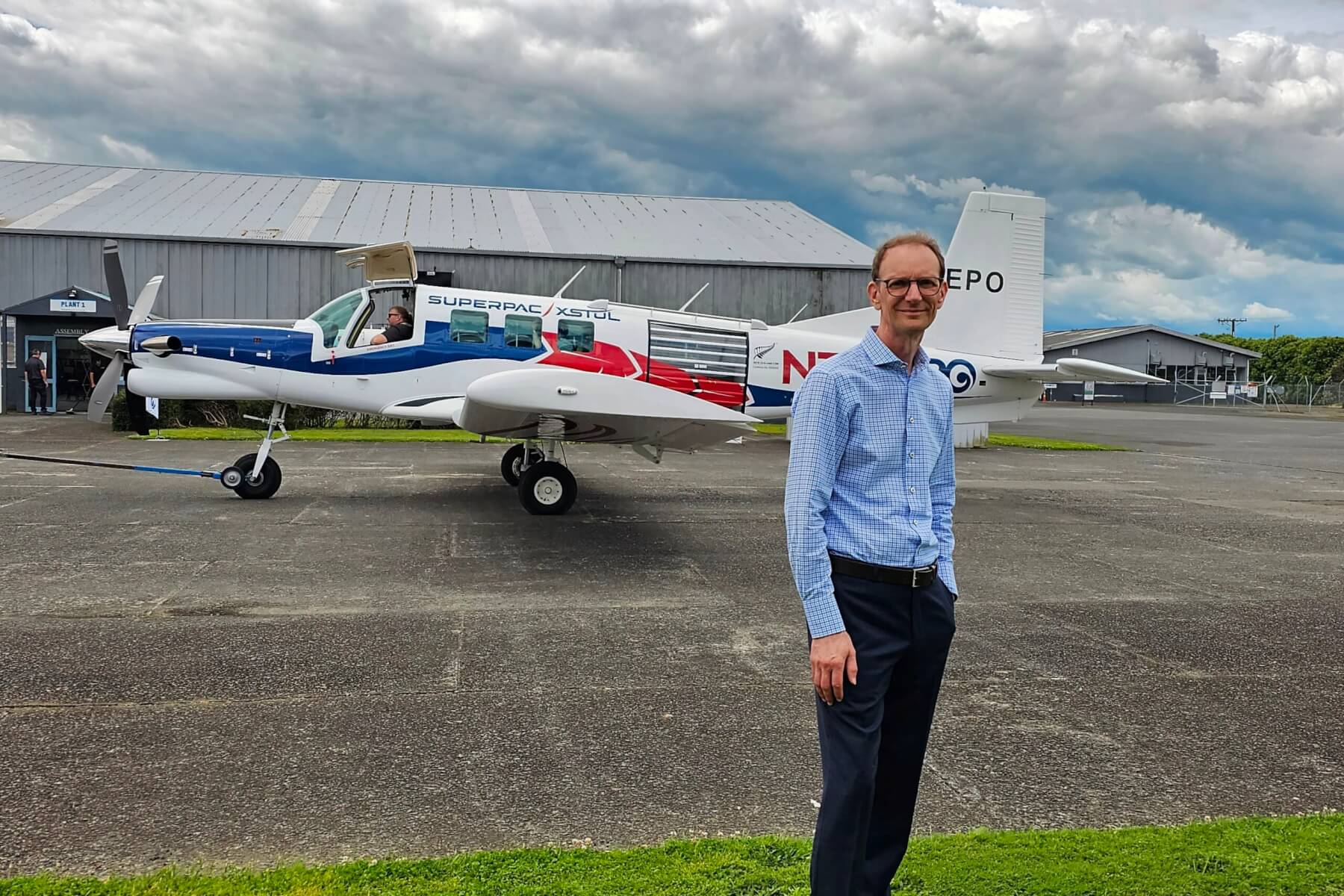
Stephen Burrows and the SuperPac XSTOL (Extremely Short Take-Off and Landing) aircraft at the Airport Road aviation manufacturing facility his father also used to work at. Photo: Mary Anne Gill.
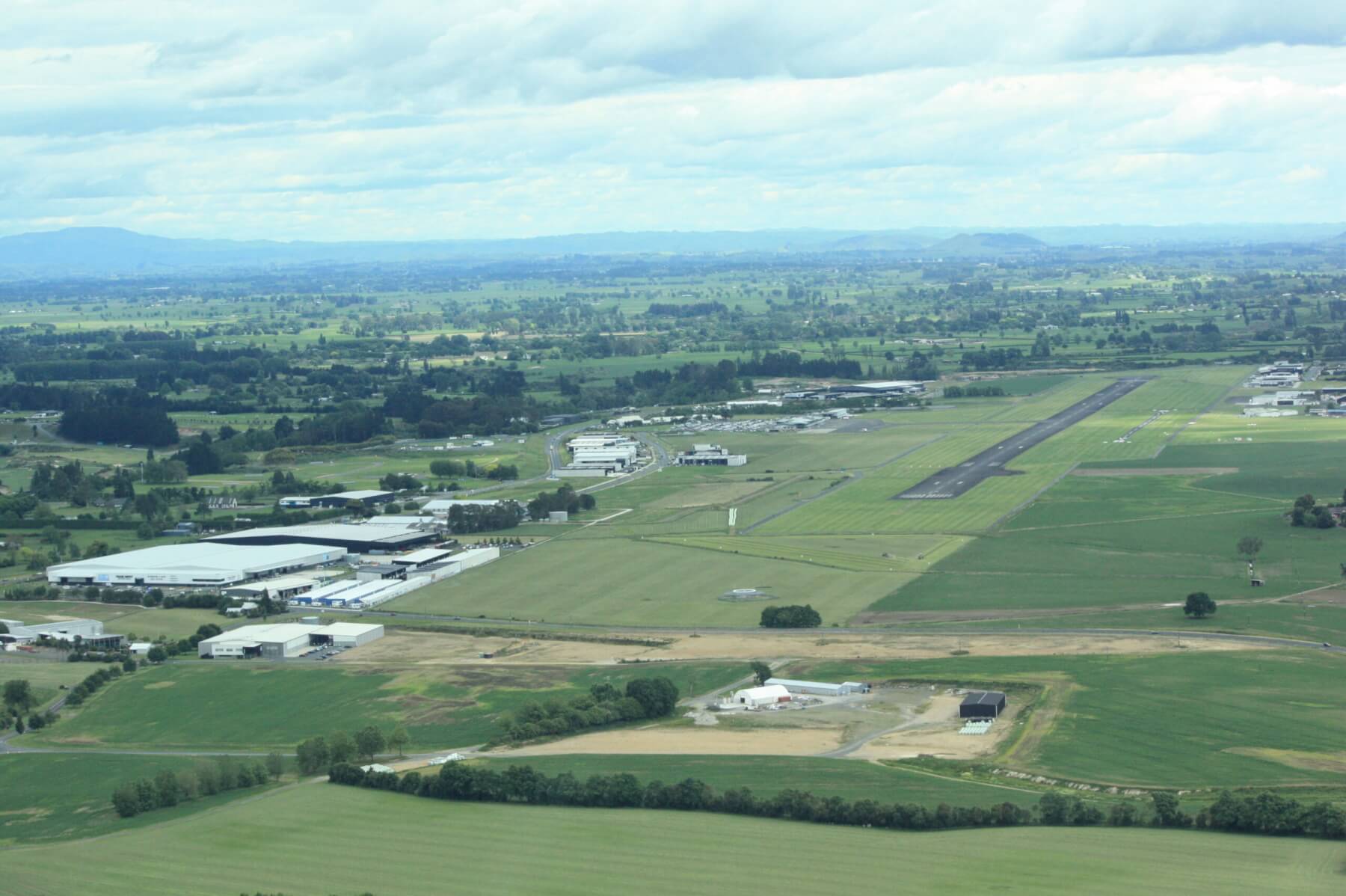
The SuperPac XSTOL plane descends towards the Hamilton Airport Runway with NZ Aero’s headquarters to the left.



